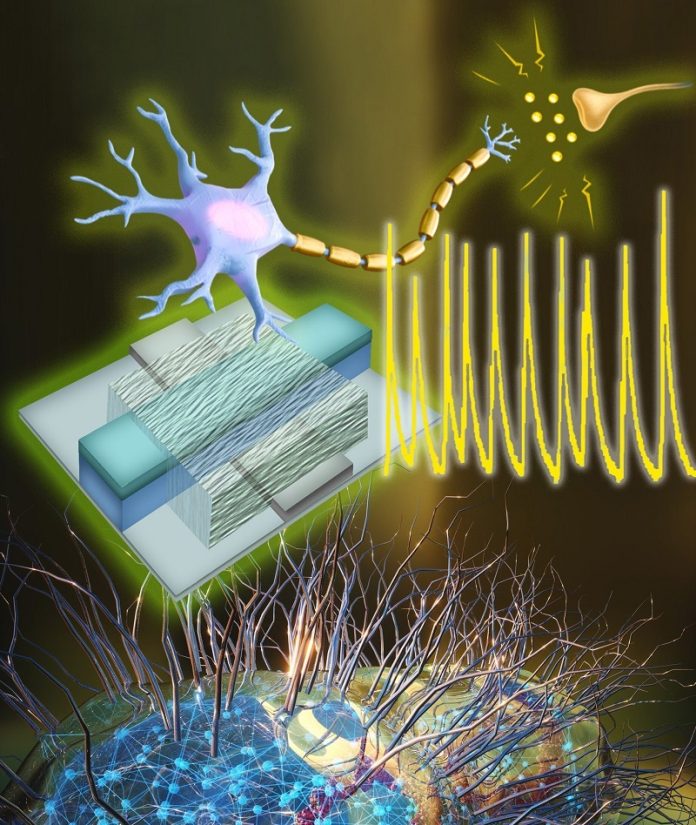
For decades, scientists have dreamed of building computers that work more like the human brain—powerful, efficient, and seamlessly connected to the body.
Now, engineers at the University of Massachusetts Amherst have taken a major step toward that future.
They have created the first artificial neuron that not only mimics the electrical behavior of real neurons but also operates at the same low voltage, allowing it to potentially communicate directly with living cells.
The research, published in Nature Communications, builds on earlier work using protein nanowires from a bacteria called Geobacter sulfurreducens.
This unusual microbe can generate electricity, and its protein structures have turned out to be perfect building blocks for bio-inspired electronics.
“Our brain processes huge amounts of information, but it does so with incredibly low power,” explained lead author Shuai Fu, a graduate student in electrical and computer engineering.
“For comparison, your brain runs on about 20 watts of power—the same as a dim lightbulb. But large artificial intelligence systems, like ChatGPT, can consume more than a megawatt to perform similar tasks.”
That difference in efficiency is staggering. The human brain is over 100 times more energy-efficient than the circuits in modern computers. The reason lies in neurons, the billions of specialized cells in our nervous system that send signals with tiny electrical pulses.
Previous attempts to build artificial neurons have fallen short because they required far too much voltage and power—up to 10 times more voltage and 100 times more energy than natural neurons.
That made them inefficient and incompatible with biological systems. “Living neurons would be overwhelmed by that level of electricity,” said Jun Yao, senior author of the study and an associate professor at UMass Amherst.
The new artificial neurons are different. They operate at just 0.1 volts—the same level as natural neurons in the human body. This breakthrough makes them both efficient and biologically compatible.
The implications are wide-ranging. Computers built from such bio-inspired circuitry could be far more energy-efficient than today’s machines. Even more exciting, these artificial neurons could serve as the foundation for electronic devices that directly interact with the human body.
Currently, wearable devices like smartwatches and health monitors need to amplify tiny biological signals before sending them to a computer for processing.
That amplification step consumes extra energy and complicates design. But sensors made with low-voltage artificial neurons could skip the amplification entirely, reading the body’s signals directly with minimal energy.
The key to this innovation is the protein nanowire from Geobacter sulfurreducens.
Yao and his colleagues have already used these nanowires to create a sweat-powered biofilm that charges personal electronics, an “electronic nose” that can detect disease, and even a device that harvests electricity from the air.
Now, with the development of artificial neurons, the same bacterial nanowires may help bridge the gap between biology and technology. In the future, this could mean computers that not only think more like us but also connect seamlessly with our bodies.



